When my children were young, it was hard to find picture books where they could see themselves and their Orthodox Christian faith. Sure, there were books about saints, and books that explained the feasts. But picture books about Orthodox children who loved the saints? Or about Orthodox children celebrating the feasts? Or about Orthodox people doing ordinary things, with their faith quietly in the background?
Nope, nope, and nope.
But that has changed. If you’re shopping for picture books for children you love, check out the books on this list.
Some of them put our Orthodox faith front and center. They hold up a mirror to our faith and our lives, so our children receive the joy of seeing themselves in a book. Some are subtle – an icon over the door, a mention of a feast.
Representation matters. All of our children need books that include people like themselves. So if you have Orthodox children in your life, take a look at these books, and consider adding them to your child’s library.
Picture books for Pascha
Before I wrote Catherine’s Pascha, I searched diligently for picture books about people celebrating Pascha, or if not Pascha, then celebrating the Resurrection of our Lord in any tradition. Pascha is, of course, the feast of feasts, the holy day of holy days, the single most important day of the year for Christians. No other day comes close. But books about people celebrating the day are few and far between. I shared a fairly complete list with Kate Olson on her blog. The four books here feature Orthodox Christians.
Chicken Sunday by Patricia Polacco
This picture book is a masterpiece. A Ukrainian girl and her best friends, two black boys, want to buy the boys’ grandmother a new Easter hat. When they go to talk to the hatmaker, who is Jewish, some older boys have egged the store, and the hatmaker thinks it was them. They regain his trust with pysanky, Ukrainian Easter eggs. Sharp-eyed children might notice icons on the wall at the girl’s home.
Your children might notice that the hatmaker has a number tattooed on his arm. You’ll want to be prepared to discuss the Holocaust as you read the story.
Read my full review of Chicken Sunday.
Catherine’s Pascha by Charlotte Riggle
This is the picture book I wrote, when I couldn’t find Pascha picture books for my children. It’s about a little girl named Catherine celebrating Pascha with her family and her best friend, Elizabeth. The book works on many levels, depending on the age and knowledge and sophistication of the reader. For the youngest readers, it’s the story of a child who wants to stay awake all night for the Pascha celebration. It focuses on the parts of the celebration most loved by children. At the same time, it shows the inclusivity of the Church and the variability of people and traditions. And it explores the universality of Pascha across space and time.
The Lucky Egg by Anna Prokos
This story follows a little boy named Billy as he and his family celebrate Greek Easter. The story focuses on family and fun. The grandparents help prepare the special foods to celebrate the feast. They all go to church to celebrate Pascha in the middle of the night. Billy’s family brings decorated candles from home. They shout Christ is risen! and Christos anesti! And then they return home to share their special Pascha breakfast.
Read my full review of The Lucky Egg.
Rechenka’s Eggs by Patricia Polacco
Babushka lives alone in a warm and cozy house. She has icons on the wall and kulich and pashka with her tea, and she sees miracles everywhere she looks. When a goose is injured by hunters, she takes it in, and the goose keeps her company while she makes pysanky eggs for the Easter festival. She calls the goose Rechenka. When Rechenka starts regaining her strength, she accidentally destroys Babushka’s eggs. But what looks like a disaster turns into a miracle.
Read my full review of Rechenka’s Eggs.
Picture books about Orthodox heroes
Every child needs stories of heroic people. We have, of course, the stories of the saints from long ago, like St. Brigid and St. George. These stories are wonderful and important; that’s why the Church has saved them and handed them down like a treasure, from generation to generation. But so many of the stories are from long ago and far away. These two books are about Orthodox heroes from World War II. Which is still a long while ago, if you’re 8 years old. But they are important. When our children learn about the Holocaust in school, they will know that people who share our faith were there, putting their own lives at risk to save others.
Silent as a Stone: Mother Maria of Paris and the Trash Can Rescue by Jim Forest
A deadly game of hide-and-seek is at the heart of Jim Forest’s magnificent picture book. It was July of 1942. Paris has been under Nazi control for two years. Things have gone from bad to worse. And a nun, Mother Maria of Paris, is asking God to show her what to do.
When she learns that the Nazis are taking Jewish families to the velodrome, she goes there herself. She insists that the guards let her in to offer spiritual comfort to their prisoners. They comply. And while she’s there, she comes up with a plan to save the children. It’s a dangerous plan. But it just might work.
Mother Maria is, of course, an Orthodox saint, but this beautiful book is presented as history rather than hagiography.
Read my full review of Silent as a Stone.
Passage to Freedom: The Sugihara Story by Ken Mochizuki
Chiune Sugihara was an Orthodox Christian and Japanese diplomat during World War II. Sugihara asked for permission from his government to issue visas to the Polish Jews in Lithuania who had come seeking his help. With the visas, these Jews could travel through Russia to Japan and then to other countries. Three times, Sugihara asked permission. Three times, he was denied.
Sugihara was faced with a choice: Would he obey his government, or would he obey God?
Chiune Sugihara chose to obey God.
Read my full review of Passage to Freedom.
Orthodox fairy tales
Fairy tales are one of the ways that a culture communicates its values from one generation to the next. They may be scary. They teach you what you should be afraid of. And from fairy tales, you learn that frightening things can be overcome. Only one of these stories is traditional fairy tale from an Orthodox culture. The other two that are recent stories told in the manner of fairy tales.
I could easily have included Rechenka’s Eggs in this section. It’s a Pascha story (which is why it’s in the Pascha section), but it’s also a fairy tale.
Vasily and the Dragon retold by Simon Stern
This traditional Russian fairy tale is the story of Marko the Rich, who learns in a dream that he will be visited by God and St. Nicholas. Instead, two beggars arrive at his door. He refuses them hospitality. Of course, those beggars are actually God and St. Nicholas. And his daughter hears them say that a boy born in the village that night will someday possess everything that belongs to Marko. She tells her father, who decides to find and kill the baby. He learns that it’s hard to fight a baby when St. Nicholas takes the baby’s side.
Read my full review of Vasily and the Dragon.
The Magic Babushka by Phyllis Limbacher Tildes
This story, set in Russia long ago, features a near-sighted girl and a Russian witch. But this is a good witch, the shape shifter Baba Babochka, Grandmother Butterfly. As far as I know, Baba Babochka is Tildes’s creation, and not a real folk character. And this story is not a retelling of an old Russian fairy tale, but one that came out of Tilde’s heart and imagination. It is filled with pysanky eggs, the tsarina’s court, and magic. Oh, and love, and happily-ever-after.
Read my full review of The Magic Babushka.
Sasha and the Dragon by Laura E. Wolfe
This fairy tale is set in a time that is not so very long ago, in a place that is not so very far away. It is the story of a little boy who has immigrated with his family to America from Russia. The boy misses his home terribly. He worries about his grandmother, who is ill and perhaps dying. And he is afraid of the dragons.
This might not seem, on your first reading, like a fairy tale. There are no fairies in it. There are no witches, no handsome princes or wicked stepmothers. But there is a dragon. And an angel. And it reads just like a fairy tale.
Read my full review of Sasha and the Dragon.
Stories for the Christmas season
When my children were young, I gave them picture books on St. Nicholas Day. The books were always about St. Nicholas or about Christmas. None of them were specifically Orthodox, but the Nativity story is the Nativity story, and St. Nicholas is St. Nicholas. And the books contained wonderful stories and gorgeous illustrations. I loved them. And I love these, which will resonate particularly well with Orthodox children.
King Island Christmas by Jean Rogers and Rie Muñoz
The Native Alaskan village on King Island had been without a priest for many months. The new priest arrives at the island on the last ship before winter ice sets in. But the wind and the waves make it too dangerous for the men of King Island to go to the freighter in their small boat to get their priest. If they can’t get their priest off the ship, he will have to leave, and there will be no priest to celebrate the Christmas liturgy.
Read my full review of King Island Christmas.
The Saint Nicholas Day Snow by Charlotte Riggle
It’s Saint Nicholas Eve, and Catherine is excited about Elizabeth coming over for the night. But Elizabeth’s grandmother is in the hospital, and Elizabeth is worried about her Nana. The book combines the story of the overnight with a second, wordless story about what’s happening with Elizabeth’s grandmother. In the main story, the girls bake cookies, catch snowflakes, and listen to stories about Saint Nicholas. At the same time, you see Elizabeth’s parents at the hospital. The priest arrives and prays with them, as Elizabeth and Catherine and Catherine’s mom pray at home.
Of course, I haven’t reviewed The Saint Nicholas Day Snow, since I wrote it. But you can check out these reviews by other people.
An Orthodox board book
Orthodox board books simply didn’t exist when my kids were small. They do now.
Goodnight Jesus by Angela Isaacs
This delightful book starts with the little one kissing icons of Jesus and Mary. Then the little one kisses saints and the Gospel book and the cross. Of course there are kisses for the family (which includes three brothers of varying ethnicities). And kisses for Grandmother’s photograph. And the stuffed bunny. And even a kiss for the goldfish!
Read my full review of Goodnight Jesus.
And check out my review of another board book by Angela Isaacs, I Pray Today. I Pray Today wasn’t out yet when I originally wrote this post. It’s a gorgeous little book, though, and I don’t want you to miss it!
Picture books about Orthodox stuff
“Stuff” may not be exactly the right word. But, as Orthodox Christians, our faith is deeply embedded in the material world. Matter matters to us. And the stuff made of matter that we use in our faith rarely has a prominent place in picture books. It does in these.
In the Candle’s Glow by Elizabeth Crispin Johnson
This charming picture book shows how prayer candles are made and used. It starts with bees gathering nectar and making wax. Then Sister Irene harvests wax and honey from the hives, singing hymns and blessing the bees as she works. Going in from the hives, Sister Irene makes dipped candles. The candles go from the monastery to a church, where a little girl named Felicia takes a candle, lights it, and sees her prayers in the candle flame.
That all sounds fairly prosaic. But every word is chosen with skill and care, and the illustrations are infused with colors of honey and candlelight. The book is quite simply beautiful.
Read my full review of In the Candle’s Glow.
The Woman and the Wheat and The Man and the Vine by Jane G. Meyer
If you’re looking for a literary meditation on the Eucharist, you could not do better than this pair of books. They are contemplative prose poems, as rich and deep as the soil, as beautiful and lyrical as the sun and the moon and the rain. But, while they are worthy of being included in any anthology of modern religious verse, they are wrapped up in a pair of particularly lovely picture books. In the poems, the man and the woman are universal. They represent all of humanity.
In the picture books, they are a particular woman and a particular man. One book shows how this woman grows and harvests the wheat and makes the bread for the Eucharist. The other shows how this man grows and harvests grapes and makes the wine for the Eucharist. Together, they show how the Eucharistic elements come from our sharing our work with God, and God giving the Gifts back to us, and we receive it as love and joy.
Read my full review of The Woman and the Wheat and The Man and the Vine.
A “stealth” Orthodox picture book
Among people who write diverse books, there’s an idea called “casual diversity.” These are books where the diversity is there silently. It’s not called out in any way. It doesn’t affect the story. It’s just there.
Ezra Jack Keats’s groundbreaking book, The Snowy Day is an example of casual racial diversity in a book. The boy in the red hooded jacket is just a boy who happens to be black. King for a Day is an example of disability-related casual diversity. It’s about a boy who just happens to use a wheelchair.
You don’t often see characters in picture books who just happen to be Orthodox Christians. I’ve found one. If you know of another, share it in a comment, please!
Leave Me Alone by Vera Brosgol
If you have ever felt overwhelmed by the too muchness of too many demands from too many people – even people you love – you’ll relate to the old woman in Leave Me Alone! She just wants to knit warm cozy sweaters for all her grandchildren. But there was just too much going on. So she packed up all her knitting stuff, and went off in a huff, shouting “Leave me alone!”
And then things start going just a little bit crazy. As she strives to find a place to be alone, she encounters bears and mountain goats and little green moon men. And then she stumbled upon a wormhole.
The illustrations contain as many surprises as the story. If you look closely, you’ll even see an icon over the old woman’s door.
Read my full review of Leave Me Alone.
Read More
The complete list of multicultural Easter picture books: If you’re looking for picture books that show people celebrating the Resurrection of our Lord Jesus Christ, you’ll find them on this list. All of them. (Well, almost all.)
Easter Picture Books Keep Pascha Present: Let your little ones read their Easter books all year round, to build their love of Pascha.
The best picture books with disabled characters: If you want to diversify your picture book collection, start with the books on this list.
Buy the Books!

These delightfully diverse books will give Orthodox Christian children the chance to see themselves in books. And they’ll give other children the chance to see books that feature cultural practices they may not be familiar with.
Catherine’s Pascha
FINALIST IN THE 2015 USA BEST BOOK AWARDS
Catherine doesn’t like vegetables. She doesn’t like naps. She doesn’t like it when her mom combs her hair. She loves hot dogs, chocolate cake, and her best friend, Elizabeth. Most of all, she loves Pascha! Pascha, the Orthodox Christian Easter, is celebrated in the middle of the night, with processions and candles and bells and singing. And Catherine insists that she’s not a bit sleepy.
Celebrate the joy of Pascha through the magic of a book: Catherine’s Pascha. Available on Amazon, Bookshop.org, and my webstore.
The Saint Nicholas Day Snow
Shoes or stockings? Horse or sleigh? Does St. Nicholas visit on December 6 or on Christmas Eve? Will a little girl’s prayer be answered? When Elizabeth has to stay at Catherine’s house, she’s worried about her grandmother, and worried that St. Nicholas won’t find her. The grownups, though, are worried about snow.
Celebrate the wonder of St. Nicholas Day through the magic of a book: The Saint Nicholas Day Snow. Available on Amazon, Bookshop.org, or my webstore.




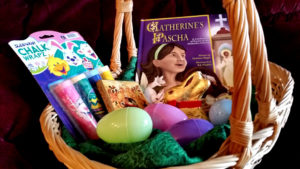
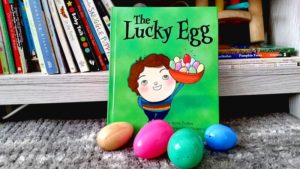



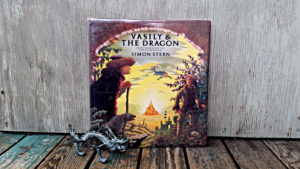

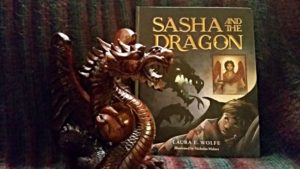





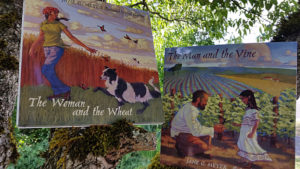

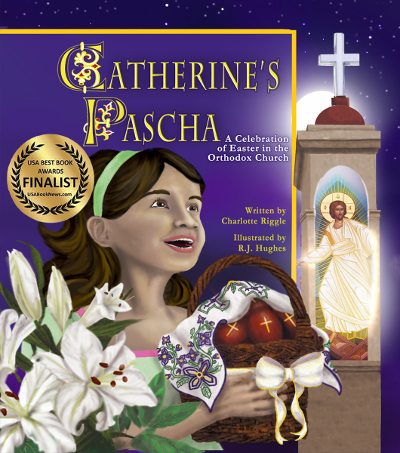

Great list! Thanks!
Thanks, Suzie!
What an awesome list! I didn’t realize there were so many and I’m anxious to read some new titles I discovered on this list.
I love it when I can share titles that you haven’t seen yet. 🙂
It’s a wonderful list. I have quite a few, including Polacco’s books, and I’ll be buying more. Might I also suggest folks look at this publisher? https://www.newromepress.com/
They have two new books for children, one about St. Paisios, and another with illustrated stories from the Desert Fathers that older children might like.
Thank you so much for the suggestion, Elizabeth! I wasn’t familiar with these books — I’m glad to learn about them!